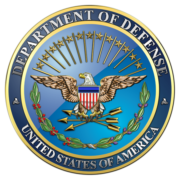What does Reversibility mean for the Defense industry? On January 5, the new U.S. Defense Strategic Guidance was released. Much attention was paid to the following:
 “DoD will manage the force in ways that protect its ability to regenerate capabilities that might be needed to meet future, unforeseen demands, maintaining intellectual capital and rank structure that could be called upon to expand key elements of the force.”
“DoD will manage the force in ways that protect its ability to regenerate capabilities that might be needed to meet future, unforeseen demands, maintaining intellectual capital and rank structure that could be called upon to expand key elements of the force.”
This line of thinking can be described as “ reversibility, ” a buzzword that has assumed prominence among those vendors who are trying to navigate the planned drawdowns and future budget cuts. “Reversibility” acknowledges the overwhelming historical evidence that we have a rotten track record of preparing for the next war, and we need to be able to change course as the situation warrants.
There are two immediate real-world consequences to this doctrine:
- A high proportion of midgrade officers will be kept during personnel reduction in the Army and Marines
- The DoD will rely on the National Guard and Army reserves for manpower in case of a rapid build-up.
The last point really isn’t a change, since the Guard and Reserves figured prominently in the recent wars. I guess the “reversibility” doctrine means that the next time these guys are called up for action, it won’t be a surprise.
Beyond these two points, no one really knows what it means. The Guidance is clear in that it wants to apply this concept to “…the vectors on which we place our industrial base, our people, our active-reserve component balance, our posture, and our partnership emphasis. – is a key part of our decision calculus.”
“Reversibility” applies to the vital industrial base, but how? What does the Defense establishment say about that?
Admiral Sandy Winnefeld, vice chairman of the Joint Chiefs of Staff, said “reversibility” is about “avoiding departmental hubris.” Deputy Secretary of Defense Ash Carter invoked former Secretary Gates’ warnings that “we might get it wrong.” (DoDBuzz.com).
Deputy Defense Secretary Ashton Carter said “reversibility” is “to remind ourselves that we want to act in such a way that we, to the extent we can with a $487 billion cut (to planned spending over 10 years), preserve options for the future.” (Defense Daily)
This is good, but can anyone be more exact about how this going to affect the Defense industrial base?
One person who has talked at length about “reversibility” is Michèle Flournoy, former undersecretary of defense for policy. She said “It’s about making course corrections in response to strategic, economic or technological change…In some particular areas, where if you lost a particular part of the industrial base and it would take you years and years to recapture it, that fact has been factored into some of our program and budget decisions…That fact has been factored into some of our program and budget decisions ….So even though a particular program may have been weak or something we thought about doing away with, if in doing away with that we would completely lose a capability or the ability to have that capability in the future on a timely or responsive basis, we’ve got input of what to do in that case.” (Federalnewsradio.com)
Note that she didn’t mention one specific program that will be spared on the basis of “reversibility.” She didn’t even really give us guidelines.
Surely, Gen. Martin Dempsey would be knowledgeable about the exact impact of “reversibility,” and how it is to be applied. What does the chairman of the Joint Chiefs of Staff have to say about it?
“I’m not sure where that came from,” Gen. Martin Dempsey told the Reserve Officers Association (ROA) yesterday about the term “reversibility.” He warned that “sometimes words get loose on you” and people can “overburden words” and alter their meanings.
“I think that when this all started the idea of reversibility was more expressed by way of a concern: What if we don’t get it right,” he said at ROA’s Annual National Security Symposium in Washington.
“What if we build a force at a certain size…and then three, four, five years from now we find out that we’ve got it wrong. The question was can you reverse that. So I don’t think reversibility is a new piece of doctrine. Because I think we do know how to reverse.” (Defense Daily)
If the chairman himself doesn’t think this idea is new (or even that big a deal, evidently), then why did it figure so prominently in the Guidance? Why has it been so vociferously attacked, if no one is even sure what it is or how it will be utilized? (Critics Lob Bombs at Pentagon Strategy) I am tempted to create some sort of law postulating that the vagueness of a concept is directly proportional to the amount of words spent discussing it, but I will leave that to others.
“Reversibility” may be an important concept, but I suspect other forces will have a stronger influence of procurement priorities than this one. At a minimum, it appears that “reversibility” is simply the Pentagon trying to have its cake and eat it too. More precisely, the Pentagon wants to have its cake, and maintain a viable infrastructure of strategic assets to regenerate capabilities for future consumption of cake as dictated by rapidly evolving scenarios.
What I take away from my research about reversibility is that Defense vendors are going to have to be as flexible and agile as the DoD is trying to be. We must:
- Avoid locking ourselves into proprietary platforms that may not suit unknown Defense needs of the future.
- Place a premium on partnering, even with competitors, so that we can quickly create solutions to meet new demands.
- Participate in events, such as the Network Integration Exercise (NIE), and integrate feedback from these events into our offerings.
What about you, dear reader? How you think “reversibility” will impact the Defense industry?







Well welcome to the 21st Century IF your actions match your words. There has been a general lack of understanding about the importance of utilizing the latest technology. Currently, our military capabilities are one to three generations behind our adversary (at least in software) due to over regulation. Hyperspectural sensing is a prime example. In this case we are lumbering around with three bands when the rest of the world is operating at five to twenty bands with humans and computers doing what each does best. If your really interested in reversability technology I can go on for many pages because there are hundreds of examples.
Richard,
Thank you for your comment.
Some parts of your comment puzzled me. “Currently, our military capabilities are one to three generations behind our adversary (at least in software) due to over regulation.” Which adversary are you referring to? Al Qaida? China? Do terrorists in Afghanistan and Iraq really have the advantage over us in software and hyperspectral sensing?
Also, “There has been a general lack of understanding about the importance of utilizing the latest technology.” While I see a relationship, isn’t this really a different topic than reversibility? Reversibility is about maintaining certain skillsets and infrastructure during drawdowns. Rapid acquisition of innovations is more about the cumbersome procurement process, COTS vs build-to-spec, and interoperability vs. proprietary issues.
William–
Let me give you just one example, hyperspectral imaging over Afghanistan. The USA and its allies are currently flying hundreds, if not thousands of sensing missions in Afghanistan. Many of the areas where they are flying have been identified as some of the best places in the world for Rare Earth mineral deposits. Rare Earth minerals are currently key to global technology-based economic growth today and in the future. China currently holds more than 95% of this processing capability. A Google search will show that there is substantial evidence that China plans to team with Afghanistan to mine and process these rare earth minerals after the USA leaves. The value of this effort to Afghanistan will far outreach what they currently get from their drug crops. Why haven’t we (the USA) added hyperspectral sensors to these ISR flights to map the total area for Rare Earth deposits from 1000, 5000, 15,000 and 50,000 feet altitude. This would eliminate most of the atmospheric effects of the HSI sensing, allowing software to automatically account for real time atmospheric effects. I would, also, allow the USA to team with Afghanistan instead of China for future Rare Earth mining and processing (getting something back for our investment). The same could be done for oil exploration in Iraq. The USA has sacrificed many lives and financial resources in these two countries, and we shouldn’t allow China to reap the profits and strategic gain from our investment.
Again this is just the tip of the iceberg for reversibility.
Richard,
OK, I think I see what you are getting at. You’re saying that the concept of reversibility should include civilian applications. As we are reduce specific parts of the Defense sector, we can preserve needed capabilities for the future by utilizing them for commercial purposes. That is a very intriguing idea.
As a former Marine in the 90’s I remember the drawn we went through. And the administration at the time did not consider reversibility of forces then. As we cut back because of the end of the cold war and changed our fighting model towards more technology based fighting. I saw a lot of experienced Marines being forced into retirement and losing most of the old guard to budget cuts.
This was also the start of the era of private military heavily recruiting experienced war fighters. Due to budget cuts, private military head hunting and change of strategy, the military lost its war time institutional memory. When the second gulf war came around Marines had to learn firsthand what happens in the fog of war, many never getting the quality mentoring from experienced Marines.
This concept gives me hope that the military will be considering experience as part of their draw down and not discard very valuable war fighting experience.
That’s what I got out of this new Defense Strategic Guidance. What do I know, after all, I’m just a “Jar Head”.